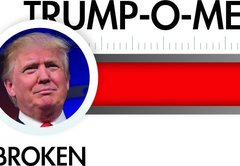Eliminate the federal debt in 8 years
Donald Trump
"We’ve got to get rid of the $19 trillion in debt. ... Well, I would say over a period of eight years. And I’ll tell you why.”
Trump-O-Meter

Promise Broken



